What could be more infuriating, even despairing, than bright red strawberries half-eaten by a slimy gastropod or pierced by a member of the winged kind (which, incidentally, you take pleasure in hearing chirp all day)? When fully ripe, strawberries indeed attract the covetousness of many greedy eaters (of course I'm not counting your children, grandchildren, dog...). So, if you want to make your delicious jam or bake a tasty tart, it's time to act to protect your strawberry harvests from pests. Major measures are necessary, without preventing the deployment of a genuine prevention strategy beforehand and giving a little space to biodiversity.
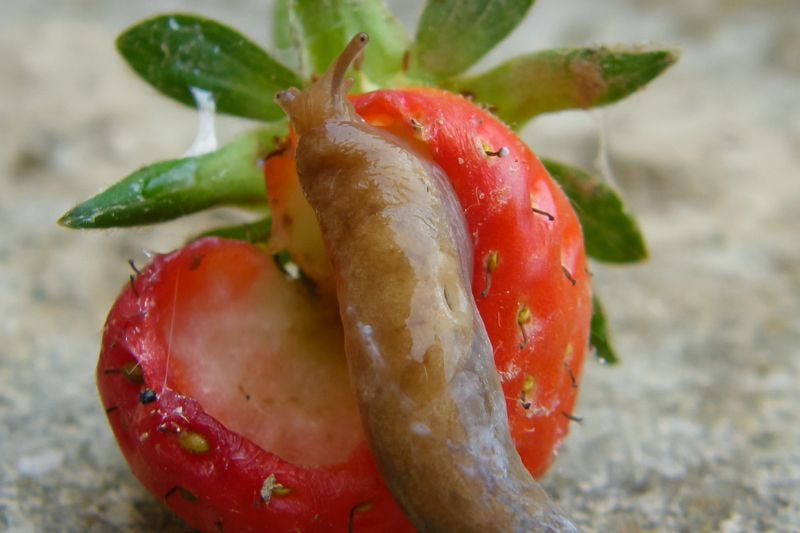
Which pests affect strawberries?
It goes without saying that strawberries attract covetousness. Their bright red colour and flavour make many members of the small wildlife in our vegetable gardens very happy. Starting with slugs and snails, regulars in strawberry beds that they rarely leave during harvest season. They often have the annoying habit of nibbling strawberries (without finishing them) as if to taunt us!
Next on the list of strawberry eaters are birds. And many birds love strawberries! Sparrows, blackbirds, starlings, wood pigeons... enjoy these ripe fruits, generally more out of thirst than hunger. They pierce them without eating them.
From the soil come rodents such as wood mice and field voles that will not disdain these sweet treats. Likewise woodlice follow slugs, as they feed on decaying matter.
However, hated as they may be, these animals are an essential link in the food chain. And it's preferable to deter them rather than eradicate them since they provide food for other beneficial garden creatures.
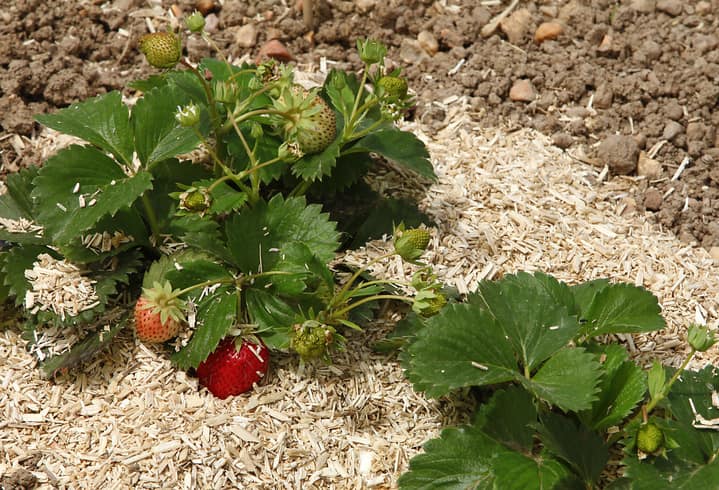
Methods to protect strawberries from slugs and snails
Slugs and snails are among the main pests of strawberries, and certainly the most feared, especially in damp weather. They strike while you sleep. By morning you're left to mourn the loss of your beautiful strawberries.
It's time to organise the fight using major measures. In advance, perhaps worth noting that in my garden we don't kill on purpose, we deter. So forget iron phosphate pellets or Ferramol (very effective in themselves) or beer.
- Hand-picking at night if your strawberry patch isn't a hectare. In advance, you can also take the precaution of placing an inverted tile where slugs and snails will shelter at night. Simply release your catch far from home during a little morning stroll
- A good layer of crushed eggshells placed around strawberry plot can discourage gastropods. But you would need to eat a lot of eggs!
- Ash if you have a fireplace, but after the slightest rain you must start again
- Applying a dry, coarse mulch can also discourage slugs and snails: flax chippings or hemp from trade, buckwheat husks, crushed pine needles. It will replace the usual sometimes damp mulch which is a favoured shelter for slugs and snails
- Install a completely natural, harmless slug barrier
- A spray of fern liquid manure.
Methods to repel birds
Blackbirds, starlings and sparrows often cause considerable damage in strawberry plots. Again, forget cruel solutions and favour gentle methods:
- Use bird netting, effective but awkward to handle directly over strawberries. Unfortunately some birds, braver and less cautious, have the nasty habit of getting their feet trapped. Prefer very fine-meshed nets
- Bird-proof tunnel: a net laid over hoops that remains easy to handle and safe for birds. Very easy to make yourself
- Scare devices or shiny objects such as CDs, scarecrows, aluminium foil, visual or sound decoys... can work for a few hours, but birds are much cleverer than you imagine
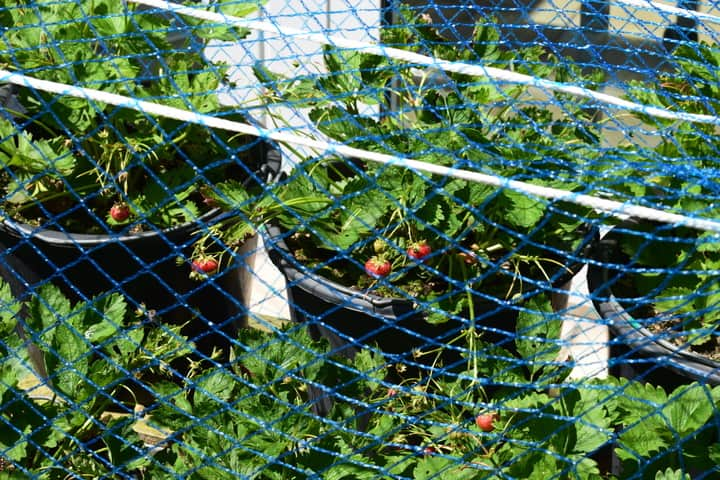
Solutions to deter rodents
Hard to dislodge because invisible, rodents, particularly wood mice, mice and field voles, come from the depths of your vegetable patch.
Again, non-lethal solutions are preferred. The only simple and relatively effective solution remains black elder (Sambucus nigra) which grows in countryside. Field voles, and also moles, fear it, so you can:
- Plant elder shoots all around your strawberry plants without skimping
- Prepare an elder leaf manure to spray around strawberries
Which prevention strategies should you deploy beforehand?
Besides these solutions to prevent enemy incursion into your strawberry plots, it is essential to act beforehand. As usual in vegetable gardening, better to prevent than cure, so you'll need to build a terrain unfavourable to strawberry eaters.
Start by maintaining your strawberry patch with care. Indeed, slugs especially like plant debris. So, clean your strawberry plants carefully by removing dead or damaged leaves, overripe fruits, or weeds. Take the opportunity to remove winter mulch, perhaps half decomposed, where slugs like to shelter. Replace with a mulch of flax, hemp or cocoa husks.
Upstream, plant all around your strawberry bed to form a vegetative barrier of companion plants known for their repellent properties against slugs and snails: alliums and in particular garlic, peppermint, rosemary, lavender, hyssop, wormwood, fennel, parsley, thyme, sage, chervil... We also offer a flower mix to sow to limit slugs.
Finally, to keep birds away from your strawberry plants, provide water points for them to drink. They will probably abandon your bright red, juicy strawberries...
Attract natural predators of strawberry pests
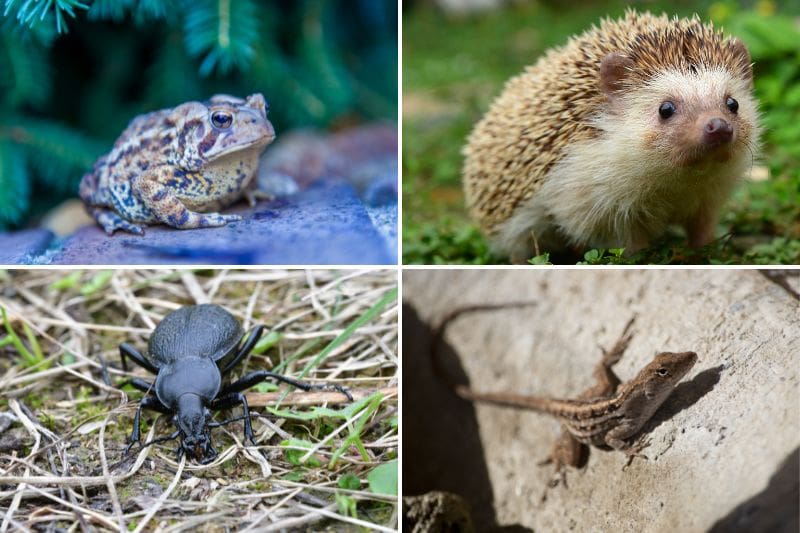
Protecting strawberries also involves biological control, that is using natural enemies of current pests, namely slugs and snails, or even rodents. Among useful helpers that will put slugs on their menu, the hedgehog that is active at night, precisely when slugs are out. Toad and frog also feast on slugs, as does the ground beetle, a beetle somewhat similar to a scarab, or lizard. To invite these slug-eaters to settle in your garden, leave an old tree stump, a pile of branches, logs and twigs, dead leaves... in a corner of your garden. To attract amphibians, digging a pond is essential.
Birds are also very effective against slugs. Don't hesitate to install feeders in winter so they get used to visiting your garden, and nest boxes. A flower meadow also attracts many insects which in turn attract birds.
To get rid of wood mice, the most effective predators are the tawny owl and the barn owl. There are specific nest boxes to place in large trees.































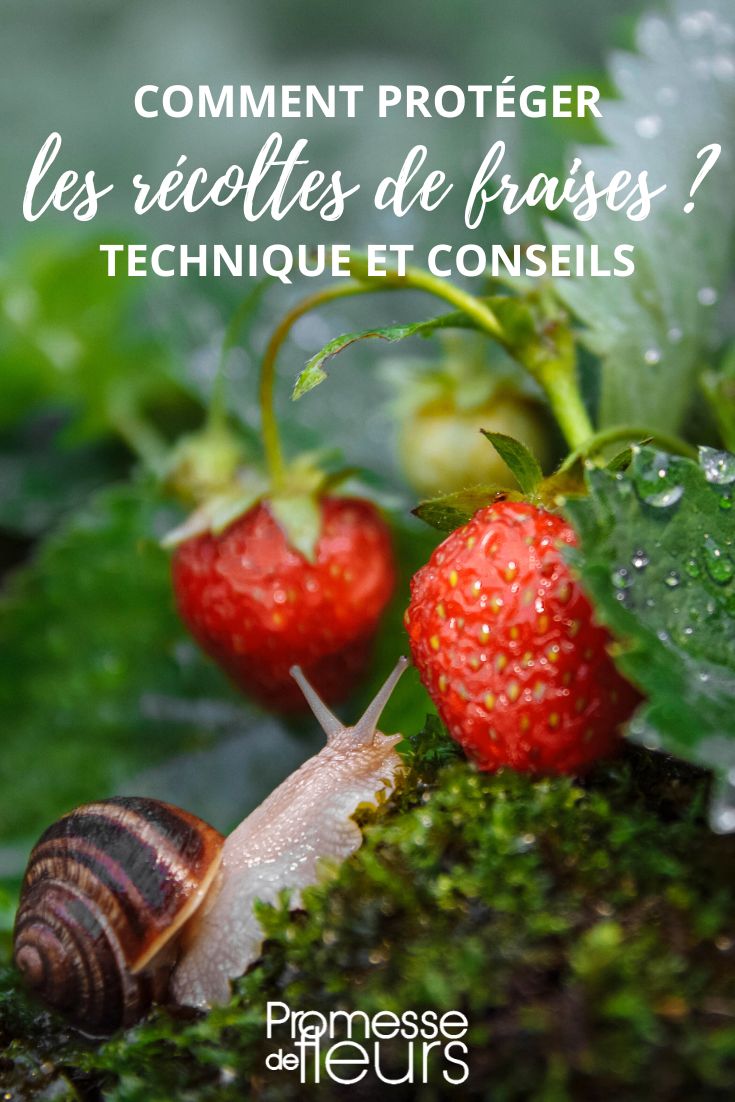
Comments